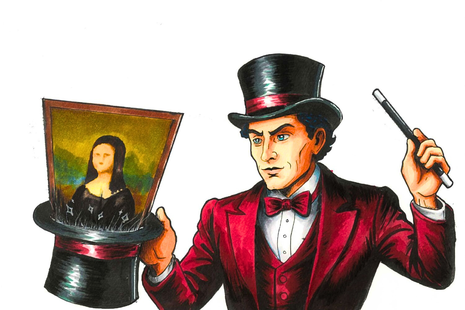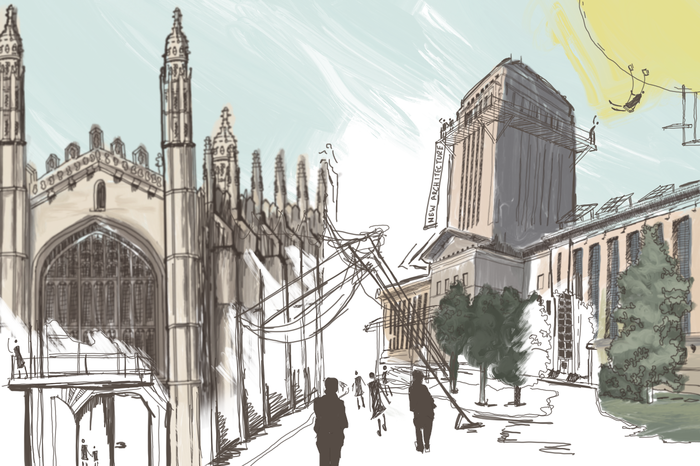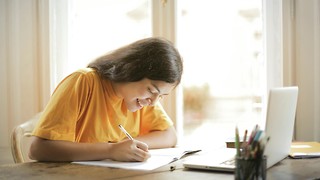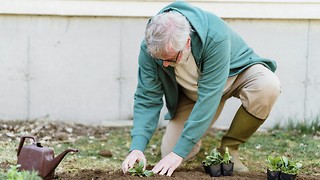It’s a kind of magic
Emma Gower muses on magic as an art form

I grew up believing in magic. As a child who devoured Disney movies and Harry Potter books as if her life depended on it, that’s not particularly surprising. But as I got older, rather than dwindling as a result of adult denial or real-world problems, my fascination with magic only grew
“The art of magic lies not with the magician, but within the wide eyes and awed expressions of their audience”
What actually is magic? Most dictionaries will provide definitions involving phrases such as ‘supernatural powers’, ‘the use of spells’, ‘the extraordinary’ – all of which are true. But a dictionary a little closer to home provides a slightly different definition. The Cambridge Dictionary declares that magic is “a special and exciting quality that makes something seem different from ordinary things”. In this way, magic becomes not just a physical act, but an experience. It can expand to mean not just the sort of magic that witches, fairies or warlocks engage in, but the sleight of hand, tricking-your-audience kind. This is the sort of magic that began to fascinate me. I became spellbound by magicians like Dynamo and David Blane, enthralled by their tantalising performances that can only be described as artistry.
But magic itself is not often described as an art. This dismisses some of the world’s oldest examples of traditional art: cave paintings, many of which are believed to be ritualistic and magical. Moreover, the word ‘magic’ itself comes from the Latin ‘magica’, short for ‘ars magica’ meaning ‘magic art’. Yet many argue that magic does not require the same level of creative pathway or thought as traditional art; it is about logic and mental manipulation. But in the words of magician Drummond Money-Coutts, ‘magic touches people in the way great art does. It lets them see the world with new eyes’. In this way, it becomes apparent that the art of magic lies not with the magician, but within the wide eyes and awed expressions of their audience.
“I discovered a more elusive magic in the form of connection and rehabilitation”
The ability to have an impact on people in such a way really stuck with me. So, when I was in middle school, a friend and I decided to set up a magic club. We had both been learning magic ourselves through a combination of online tutorials and books, but we knew that the power of magic lay in the connection between people. Thus, we turned what we had lacked into the chance to prevent others from lacking the same. We started to teach basic magic and cardistry skills to any student who wanted to learn. It was during the formation and running of this club that I began to learn just how many forms magic could take. For a pre-teen girl who looked up to the prefects and other student bodies in school, it was sort of a miracle to be granted permission to run a club so young. With that came the crackling, magical excitement of newfound responsibility and camaraderie. Most importantly of all, however, was the feeling I would get upon seeing the faces of people for whom I had just completed a trick. Those are moments I’ll never forget. The moments in which, just for a second, your audiences believe there might just be another kind of magic at play.
There is another sort of art within stage magic – its ability to manipulate lives as well as minds. Back when my friend and I ran magic club at school, the same teacher would come along every week – not because he knew anything about magic, but simply as it was his duty to supervise us. However, with every session that passed, he became more and more interested in what we were teaching. He was captivated by the comradeship it seemed to evoke among the students, and the various technical skills required for the different tricks. In a bizarre role reversal, he was inspired by our teaching. Before long, he would begin to arrive at our sessions with new skills and tricks he had learned, restoring the student-teacher balance as his skills quickly surpassed ours. As I write this, he is now a member of the Magic Circle, and I am told he now runs another magic club to an enraptured audience every week, since news of his skills took over the school. Alongside this, there was a shy young girl who would come to our club religiously to learn magic, and it became a source of refuge and joy for her in difficult times. In this way, I discovered a more elusive magic in the form of connection and rehabilitation. Perhaps that is where the true art lies – the ability of magic to create new pathways and weave people together without them even realising.
So, while I may not be able to remember many of my magical skills anymore, the memory of what magic did for me and for others still remains. What began as a slightly nerdy hobby transformed into an art form that allowed me to learn what it was like to teach, to inspire, and to connect all at once. Maybe that was the real magic all along.
 News / Pembroke to convert listed office building into accom9 December 2025
News / Pembroke to convert listed office building into accom9 December 2025 News / Gov declares £31m bus investment for Cambridge8 December 2025
News / Gov declares £31m bus investment for Cambridge8 December 2025 Features / Searching for community in queer Cambridge10 December 2025
Features / Searching for community in queer Cambridge10 December 2025 News / Uni redundancy consultation ‘falls short of legal duties’, unions say6 December 2025
News / Uni redundancy consultation ‘falls short of legal duties’, unions say6 December 2025 Lifestyle / Into the groove, out of the club9 December 2025
Lifestyle / Into the groove, out of the club9 December 2025









